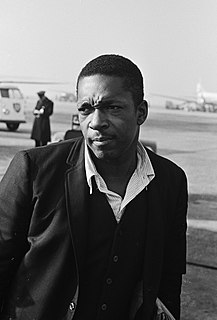
Joseph Rudolph "Philly Joe" Jones was an American jazz drummer, known as the drummer for the first "Great" Miles Davis Quintet. He should not be confused with another jazz drummer, Papa Jo Jones, who had a long tenure with Count Basie. The two men died only a few days apart.

Giant Steps is the fifth studio album by jazz musician John Coltrane as leader, released in 1960 on Atlantic Records, catalogue SD 1311. This was his first album as leader for his new label Atlantic Records. Many of its tracks have become practice templates for jazz saxophonists. In 2004, it was one of fifty recordings chosen that year by the Library of Congress to be added to the National Recording Registry. It attained gold record status in 2018, having sold 500,000 copies.

Olé Coltrane is the ninth album by jazz musician John Coltrane, released in 1961 on Atlantic Records, catalogue SD 1373. The album was recorded at A&R Studios in New York, and was the last of Coltrane's Atlantic albums to be made under his own supervision.

Coltrane Plays the Blues is an album credited to jazz musician John Coltrane, released in 1962 on Atlantic Records, catalogue SD 1382. It was recorded at Atlantic Studios during the sessions for My Favorite Things, assembled after Coltrane had stopped recording for the label and was under contract to Impulse Records. Like Prestige Records before them, as Coltrane's fame grew during the 1960s, Atlantic used unissued recordings and released them without either Coltrane's input or approval.

Soul Station is an album by jazz saxophonist Hank Mobley, released in 1960 on Blue Note Records, catalogue BLP 4031. Along with Roll Call, the LP that followed this release, this is one of Mobley's best-known albums. Recorded at the Van Gelder Studio and rooted in the hard bop style, Mobley's quartet features his past bandleader in the Jazz Messengers, Art Blakey, and two future bandmates from his time in the Miles Davis Quintet, Wynton Kelly and Paul Chambers. The album's bookends are two standards, "Remember" by Irving Berlin and "If I Should Lose You" by Ralph Rainger and Leo Robin. Between these standards are four new Mobley compositions, featuring the bluesy title track and the uptempo "This I Dig of You."

Coltrane's Sound is an album credited to jazz musician John Coltrane, released in 1964 on Atlantic Records, catalogue SD 1419. It was recorded at Atlantic Studios during the sessions for My Favorite Things, assembled after Coltrane had stopped recording for the label and was under contract to Impulse Records. Like Prestige and Blue Note Records before them, as Coltrane's fame grew during the 1960s Atlantic used unissued recordings and released them without either Coltrane's input or approval.
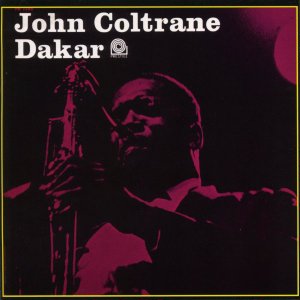
Dakar is a Pepper Adams & Cecil Payne album credited in its reissue form to jazz musician John Coltrane, released in 1963 on Prestige Records, catalogue 7280. Dakar is a reissue of one side of a 16 rpm LP called Baritones and French Horns released in 1957, and originally credited to the "Prestige All Stars".

Coltrane is an album by jazz musician John Coltrane, released in 1957 on Prestige Records, catalogue 7105. The recordings took place at the studio of Rudy Van Gelder in Hackensack, New Jersey, and document Coltrane's first session as a leader. It has been reissued at times under the title of The First Trane!.
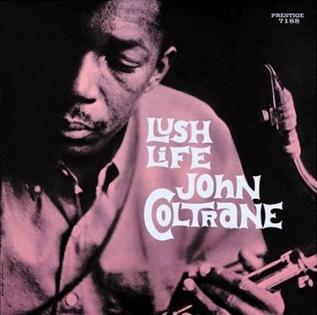
Lush Life is an album credited to jazz musician John Coltrane, released in 1961 on Prestige Records, catalogue 7188. It is assembled from unissued results of three separate recording sessions at Van Gelder Studio in Hackensack, New Jersey in 1957 and 1958. As Coltrane's fame grew during the 1960s long after he had stopped recording for the label, Prestige used unissued recordings to create new marketable albums without Coltrane's input or approval.

The Last Trane is an album credited to jazz musician John Coltrane, released in 1966 on Prestige Records, catalogue 7378.

Informal Jazz is an album by jazz musician Elmo Hope, released in 1956 on Prestige Records, catalogue 7043. It has been reissued in 1969 as Two Tenors under the billing of Hope's sidemen for the session, John Coltrane and Hank Mobley.
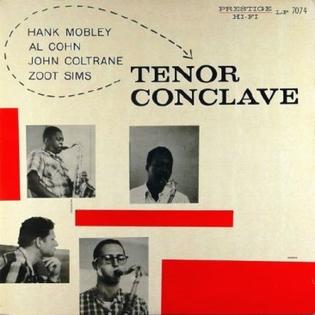
Tenor Conclave is an album by Hank Mobley, Al Cohn, John Coltrane and Zoot Sims. The album was originally recorded in 1956 and issued in 1957 on Prestige Records as PRLP 7074, and was credited to the Prestige All Stars. However, as Coltrane's profile grew in the following years after his contract with the label had expired, Prestige re-released it in 1962 as an apparent 'new' album, with a different cover prominently displaying Coltrane's name. This reissue of the album was given the catalogue number PRLP 7249.

Cattin' with Coltrane and Quinichette is an album by jazz musicians John Coltrane and Paul Quinichette, released in 1959 on Prestige Records, catalogue 7158. It was recorded at the studio of Rudy Van Gelder in Hackensack, New Jersey, and issued two years after the recording sessions took place and after Coltrane's contract had already run out with the label.

Wheelin' & Dealin' is an album credited to The Prestige All Stars, a group including John Coltrane, Frank Wess and other jazz musicians who were under contract with the Prestige label. It was originally released in 1958 as PRLP 7131, then reissued on New Jazz Records in 1964 as NJLP 8327. The compact disc reissue adds two alternate takes that did not appear on the initial vinyl releases.

A Blowin' Session is an album by jazz saxophonist Johnny Griffin, recorded and released in 1957 on Blue Note Records. It was remastered and reissued in 1999, featuring an alternate take of "Smoke Stack".

Cosmic Music is a jazz album by John Coltrane and Alice Coltrane. It was originally released after John Coltrane's death. On this release, John Coltrane only plays on "Manifestation" and "Reverend King". "Lord, Help Me to Be" and "The Sun" were later included as bonus tracks on the CD reissue of Alice Coltrane's album A Monastic Trio.
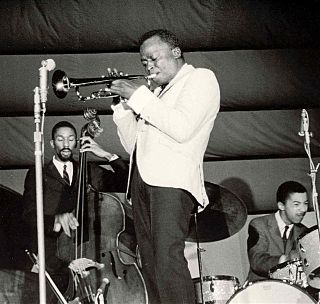
The Miles Davis Quintet was an American jazz band from 1955 to early 1969 led by Miles Davis. The quintet underwent frequent personnel changes toward its metamorphosis into a different ensemble in 1969. Most references pertain to two distinct and relatively stable bands: the First Great Quintet from 1955 to 1958; and the Second Great Quintet from late 1964 to early 1969, Davis being the only constant throughout.
This is the discography for American jazz musician Hank Mobley.

4, 5 and 6 is a studio album by saxophonist Jackie McLean recorded for Prestige Records. It was recorded in 1956 and originally released the same year as PRLP 7048. In 1962, it was reissued on the Prestige sub-label New Jazz Records as NJ 8279 with a different cover. The album was reissued on CD in 1991.

